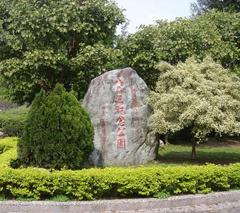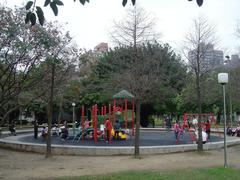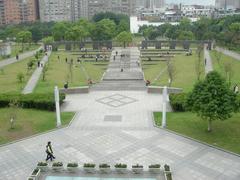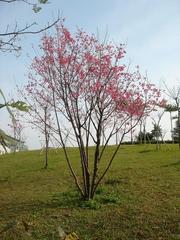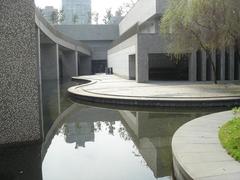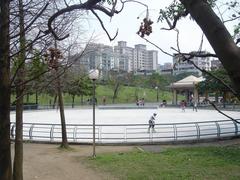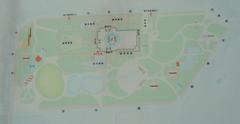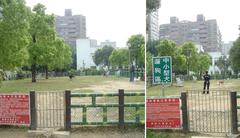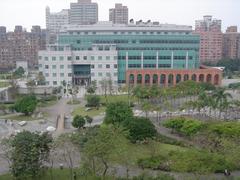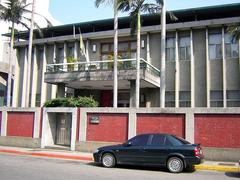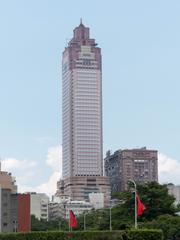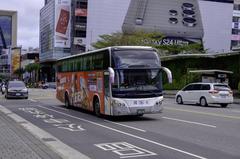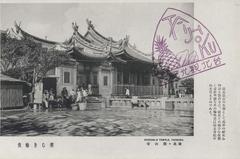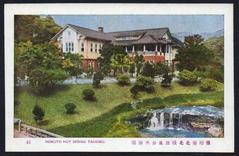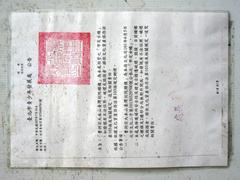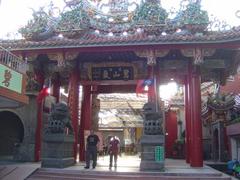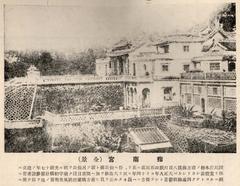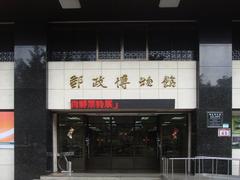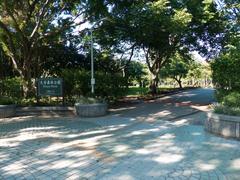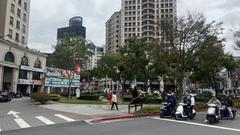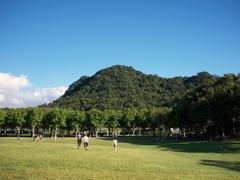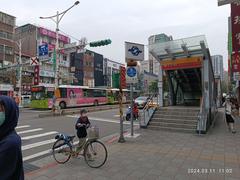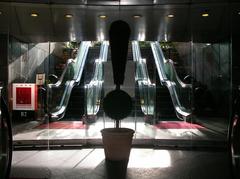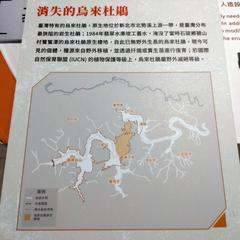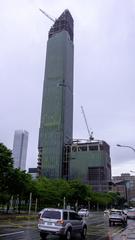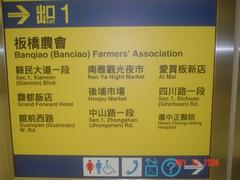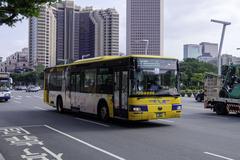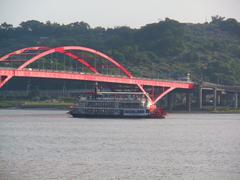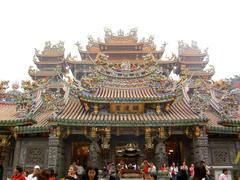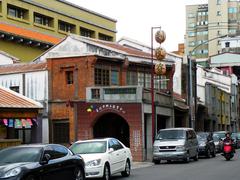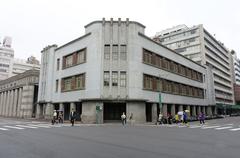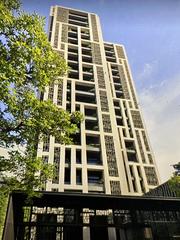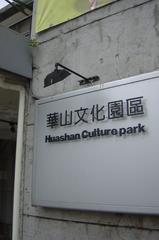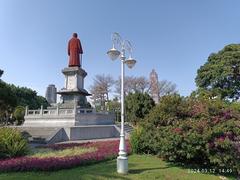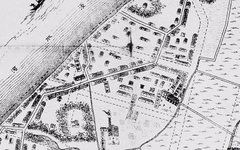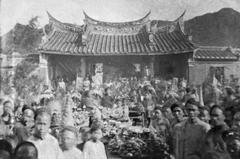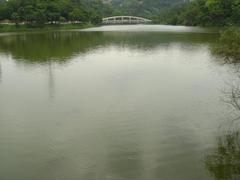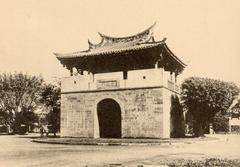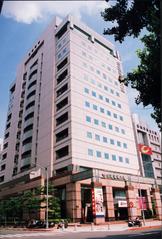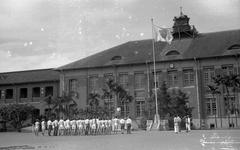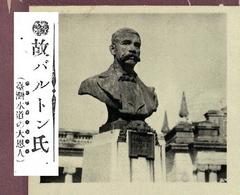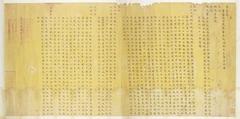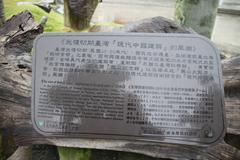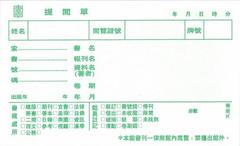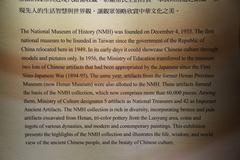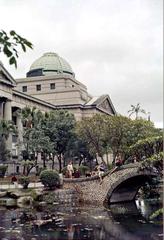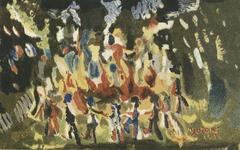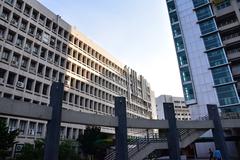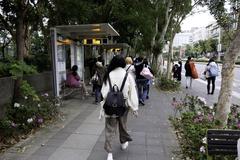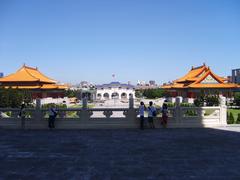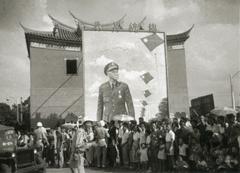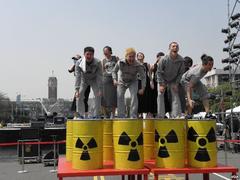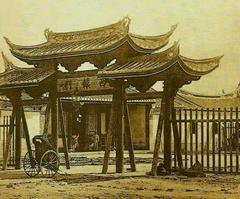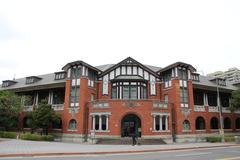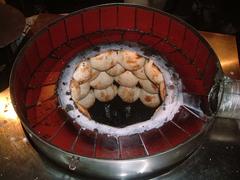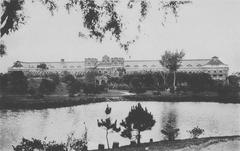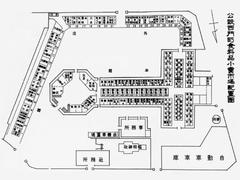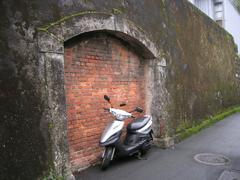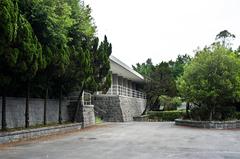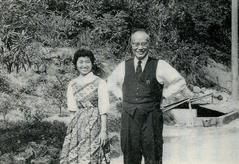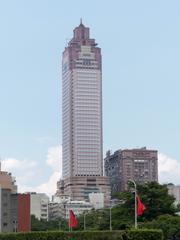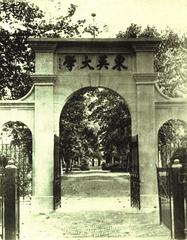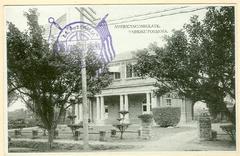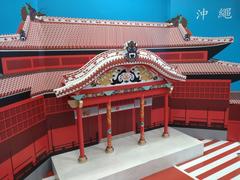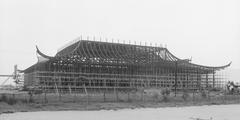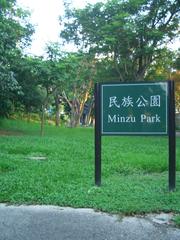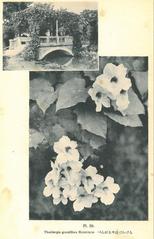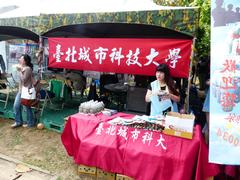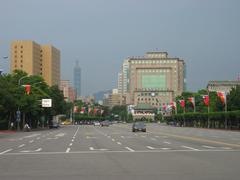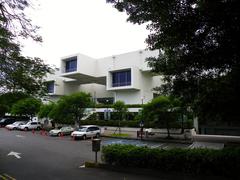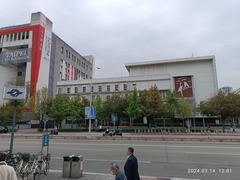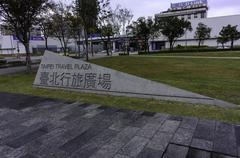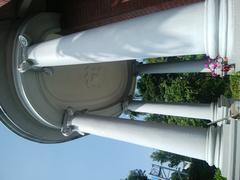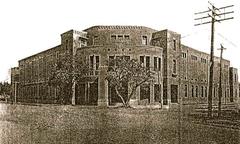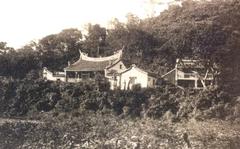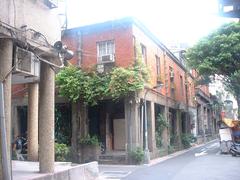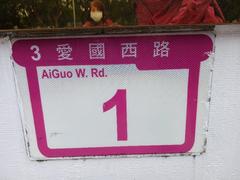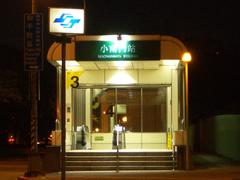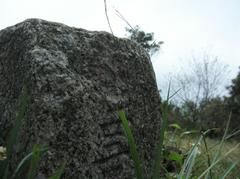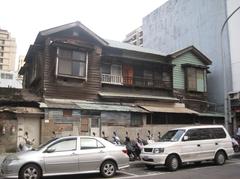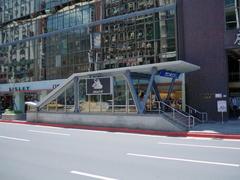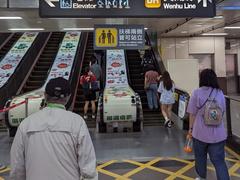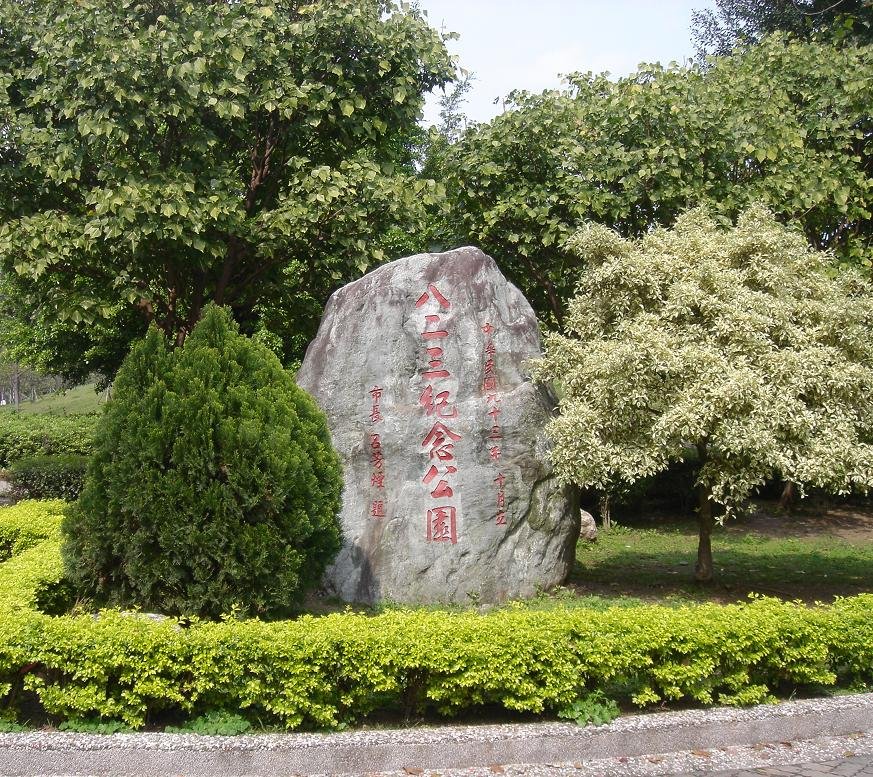
Visiting 823 Memorial Park in Taipei, Taiwan: Hours, Tickets, and Tips
Publication Date: 17/07/2024
Introduction to 823 Memorial Park
Welcome to 八二三紀念公園, also known as 4th Park, a historic site nestled in the heart of Taipei. This park is more than just a serene escape from the bustling city; it is a profound tribute to a significant chapter in Taiwanese history. Specifically, 4th Park commemorates the Second Taiwan Strait Crisis of 1958, a turbulent period that saw intense military conflict between the People’s Republic of China (PRC) and the Republic of China (ROC), which governed Taiwan. The park’s establishment in 1963 and its subsequent inauguration on August 23, 1971, marked the ROC’s determination to honor the sacrifices and bravery of soldiers who defended the Kinmen and Matsu Islands during this crisis (source).
The park is renowned for its historical monuments and memorials, including the Liberty Bell of Kinmen and a realistic gun emplacement replica, which serve as poignant reminders of the courage displayed during the Battle of Guningtou. Visitors can delve deeper into this history through the park’s museum, which houses detailed accounts, artifacts, and photographs from the Second Taiwan Strait Crisis (source).
Beyond its historical significance, 4th Park is a vibrant community hub, offering lush greenery, recreational facilities, and cultural experiences. From traditional Chinese gardens to expansive lakes, the park provides a tranquil environment for both reflection and recreation. Whether you are a history enthusiast, a nature lover, or a visitor seeking to understand Taiwan’s resilient spirit, 4th Park promises a rich and enriching experience (source).
Contents Overview
- Explore the History and Significance of 823 Memorial Park (4th Park) in Taipei
- The Second Taiwan Strait Crisis - A Defining Moment
- The Battle of Guningtou - A Turning Point
- From Battlefield to Memorial - The Birth of a Park
- A Symbol of Resilience and Remembrance
- Key Features and Their Significance
- Beyond History - A Community Space
- Visitor Experience and Tips
- Practical Information
- Special Events and Guided Tours
- FAQ
- A Lasting Legacy
- Stay Updated
Explore the History and Significance of 823 Memorial Park (4th Park) in Taipei
八二三紀念公園, often referred to as 4th Park, stands as a testament to a pivotal moment in Taiwanese history. More than just a green space, it embodies the island’s resilience and commemorates the sacrifices made during the Second Taiwan Strait Crisis, also known as the 1958 Taiwan Strait Crisis.
The Second Taiwan Strait Crisis - A Defining Moment
The park’s history is inextricably linked to the Second Taiwan Strait Crisis, a period of intense military conflict between the People’s Republic of China (PRC) and the Republic of China (ROC), which governed Taiwan. From August 23rd to October 5th, 1958, the PRC launched a massive artillery bombardment targeting the Kinmen Islands (also known as Quemoy) and Matsu Islands, both controlled by the ROC. The objective was to seize these islands and ultimately undermine the ROC’s legitimacy.
The Battle of Guningtou - A Turning Point
The crisis reached its peak with the Battle of Guningtou, fought on the Kinmen Islands. This battle, lasting from August 23rd to October 5th, 1958, saw the ROC forces, with support from the United States, successfully repel the PRC’s attempted invasion. The victory at Guningtou proved to be a turning point in the conflict, effectively halting the PRC’s advance and solidifying the ROC’s hold on the islands.
From Battlefield to Memorial - The Birth of a Park
Following the crisis, the ROC government sought to commemorate the sacrifices made and the victory achieved. In 1963, the decision was made to establish a memorial park in Taipei. The chosen location was a former military training ground, a poignant reminder of the conflict’s proximity.
A Symbol of Resilience and Remembrance
Inaugurated on August 23rd, 1971, the 20th anniversary of the crisis, 八二三紀念公園 serves as a powerful symbol of Taiwanese resilience and a tribute to the soldiers who fought bravely. The park’s name, “August 23rd Memorial Park,” directly references the date the crisis began, forever etching it in the nation’s collective memory.
Key Features and Their Significance
The park’s design incorporates several key features that further enhance its historical significance:
- The Liberty Bell of Kinmen: A prominent replica of the Liberty Bell, gifted by the American people, stands tall as a symbol of freedom and democracy.
- Gun Emplacement Replica: A realistic replica of a gun emplacement used during the battle provides visitors with a tangible connection to the conflict’s reality.
- Memorial Statues and Plaques: Scattered throughout the park are statues depicting soldiers in various combat poses, along with plaques inscribed with historical accounts and poems commemorating the bravery and sacrifices made.
- Museum and Exhibition Hall: The park houses a museum dedicated to the Second Taiwan Strait Crisis, showcasing artifacts, photographs, and detailed accounts of the events.
Beyond History - A Community Space
While steeped in history, 八二三紀念公園 is far from a somber memorial. Today, it thrives as a vibrant community space, attracting locals and tourists alike. The park’s lush greenery, serene ponds, and winding pathways offer a tranquil escape from the bustling city.
Visitor Experience and Tips
A visit to 八二三紀念公園 offers a unique blend of historical reflection and recreational enjoyment. Here are some tips for a memorable experience:
- Take Time to Explore: Allow ample time to wander through the park, absorbing the historical significance of the monuments and plaques.
- Visit the Museum: Delve deeper into the history of the Second Taiwan Strait Crisis at the park’s museum.
- Enjoy the Tranquility: Find a peaceful spot by the pond or under the shade of a tree and soak in the serene atmosphere.
- Capture the Moment: Don’t forget your camera to capture the park’s beauty and historical landmarks.
Practical Information
- Visiting Hours: The park is open daily from 6:00 AM to 10:00 PM.
- Ticket Prices: Entrance to the park is free, but there may be a small fee for the museum.
- Accessibility: The park is wheelchair accessible with paved pathways.
- Nearby Attractions: Consider visiting other historical sites in Taipei, such as the National Chiang Kai-shek Memorial Hall and the National Palace Museum.
Special Events and Guided Tours
The park occasionally hosts special events, such as memorial ceremonies on August 23rd, and offers guided tours for those interested in a more in-depth historical experience. Check the official website for the latest updates.
FAQ
- What are the opening hours of 823 Memorial Park? The park is open daily from 6:00 AM to 10:00 PM.
- Is there an entrance fee for 823 Memorial Park? Entrance to the park is free, but there may be a small fee for the museum.
- Are there guided tours available? Yes, guided tours are available. Check the official website for scheduling and availability.
- What are some nearby attractions? Nearby attractions include the National Chiang Kai-shek Memorial Hall and the National Palace Museum.
A Lasting Legacy
八二三紀念公園 stands as a poignant reminder of a defining chapter in Taiwanese history. It serves as a place of remembrance, honoring the sacrifices made in defense of freedom and democracy. More than just a park, it embodies the spirit of Taiwan - resilient, courageous, and forever marked by its past.
Stay Updated
For the latest information, download the park’s mobile app, check out related posts, or follow us on social media for updates.
Summary and Final Thoughts
八二三紀念公園, or 4th Park, is more than just a green space; it is a living testament to Taiwan’s resilience and a tribute to the sacrifices made during the Second Taiwan Strait Crisis. The park’s monuments, such as the Liberty Bell of Kinmen and the gun emplacement replica, offer a tangible connection to this pivotal period in Taiwanese history. These features, along with the museum’s detailed exhibits, provide visitors with a comprehensive understanding of the conflict and its significance (source).
However, 4th Park is not solely a place of historical reflection. It is a thriving community space that caters to diverse interests, from leisurely strolls in its traditional Chinese garden to active recreation in its sports facilities. The park’s cultural events and community programs further enrich the visitor experience, making it a dynamic hub of historical education, cultural immersion, and recreational enjoyment (source).
For those planning a visit, the park’s year-round appeal ensures there is always something to see and do, regardless of the season. Whether you’re capturing the beauty of cherry blossoms in spring or enjoying the vibrant hues of autumn foliage, 4th Park offers a picturesque backdrop for every activity. As you explore its pathways, remember to respect its environment and appreciate the historical context that makes this park a cherished landmark in Taipei (source).
Stay connected for more updates and tips by downloading the park’s mobile app, following on social media, and checking out other related posts. Your visit to 八二三紀念公園 will undoubtedly be a memorable journey through history, nature, and community.
Sources and Further Reading
- Taiwan Tourism Bureau, 2024, https://www.taiwan.net.tw/
- Taipei City Government, 2024, https://www.travel.taipei/en
- Taiwan Government, 2024, https://www.taiwan.gov.tw/
